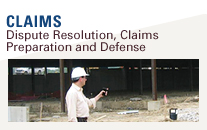Let’s face it, people’s eyes start to glaze over as soon as we begin talking about bridges or infrastructure construction. It’s unfortunate because this type of work is incredibly challenging and important. We worked on a complex claim including analysis, report writing, and deposition on the Mackinaw Bridge, and it was just for the painter! Another project we worked on was a highway. Sounds simple enough, right? That highway ran through multiple local jurisdictions, utilities, bridges, and rights of way; and that doesn’t even scratch the surface (ha ha) of unforeseen soil conditions.
With more discussion occurring about improving the country’s infrastructure, we need to remind ourselves of project management processes that can help control the time and cost of these often mega-sized projects. Obviously, the primary process that we’re talking about is pre-project planning.
- It’s hard to imagine that you could ever have enough subsurface conditions investigations. Clearly you can’t put a test bore down every foot (or meter); but, it’s imperative to get as much information as possible on soil types, rock formations, contamination, buried structures, etc. In one case we worked on, the owner knew that there was a high probability of mineshafts underneath the building footprint. They made the decision to begin construction anyway with the understanding that they would handle any mine issues as they occurred. One could make the argument that they made an informed decision on how to address the risk of mineshafts (notice I didn’t use the word “mitigate”). On the other hand, allowing for the possibility of random and intermittent delays to construction might be costlier than carrying out a detailed subsurface investigation, which would have mitigated the risk.
- Work out a detailed mapping of aboveground and underground utilities. Most people think that utility companies know where their underground lines are running. They would be wrong. Utility companies often know where the lines are, but there are so many times that their maps are either out of date or the lines weren’t actually put in exactly as specified. Understand that there are many, many examples of water or sewer lines that are 50, 60, even 100 years old. Excavations don’t have to physically hit a utility to cause a problem; even coming too close to a utility line can cause it to shift and rupture.
- Explicitly require contractors to track costs and labor hours to a sufficiently detailed schedule, and include an earned value system. This recommendation goes to a number of things.
- It promotes transparency. Transparency is the daylight that discourages outright corruption or just lazy management, which creates its own set of problems.
- It allows for early problem identification. As soon as a drop in productivity occurs, this system helps zero in on where the problem is occurring and act proactively to make any corrective action.
- Use of enhanced project management practices is good business. Not only does it increase your probability of finishing the project on time and on budget, it also helps you (as I often tell clients) “make money on purpose”. You don’t want to wait until the end of a project before you know whether or not you’re going to make a profit; you better know how you’re doing at 10% or 20% completion. While public owners may not be interested in making money, they definitely want to get a beneficial use out of the project as soon as possible.
- Seriously consider employing a Dispute Review Board to resolve conflicts as close as possible to the point of origin. The closer in time to the start of a dispute that a resolution can be reached, the more you’ll save the project time and tons of money. We all know that as reaching a resolution goes further out in time, the higher the costs for attorneys or experts and the lower the return (regardless of whether you’re the asserting or defending party). There are certainly fights worth fighting, but using a Dispute Review Board can take some of the emotional energy out of the equation such that a reasonable settlement of differences can be reached. I’m a member of the Dispute Review Board Foundation, and would be happy to answer any questions you might have on this valuable tool.
- Keep in mind that approaches to bridges or entrance/exit ramps often go through someone’s neighborhood. Never underestimate community engagement. Local populations can be a great ally or your worst nightmare. Early involvement of local people can help assemble a work force or short-circuit possible protests of the work by addressing concerns.
As always, please call us if there’s anything VN Services can do for you!









Great Article! Most things written here is unbelievably true. Transparency is very crucial too, the tracking of the people and the number of hours. #ubi #ulticon #ulticonbuildersinc